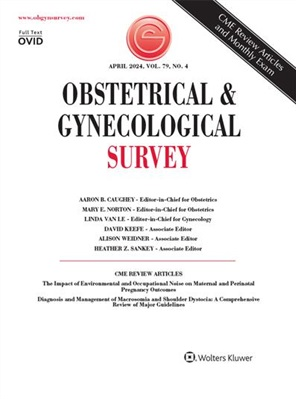模拟训练对肩部难产处理及永久性臂丛分娩损伤发生率的影响:一项观察性研究
IF 4.3
4区 医学
Q1 OBSTETRICS & GYNECOLOGY
引用次数: 0
摘要
(abstract from BJOG 2023; 130:70-77)阴道分娩时臂丛分娩损伤(brachial plexus birth injury, BPBI)的发生率为0.4 - 3.8 / 1000。这是一种由牵引颈、胸神经根引起的并发症,可导致一岁发病肢体力量下降、完全瘫痪或活动范围受限。本文章由计算机程序翻译,如有差异,请以英文原文为准。
Impact of Simulation Training on the Management of Shoulder Dystocia and Incidence of Permanent Brachial Plexus Birth Injury: An Observational Study
(Abstracted from BJOG 2023;130:70–77) The incidence of brachial plexus birth injury (BPBI) varies from 0.4 to 3.8 per 1000 vaginal births. It is a complication caused by traction to the cervical and thoracic nerve roots that can lead to decreased strength, complete paralysis, or limited range of motion in the affected limb in the first year of life.
求助全文
通过发布文献求助,成功后即可免费获取论文全文。
去求助
来源期刊
CiteScore
2.70
自引率
3.20%
发文量
245
审稿时长
>12 weeks
期刊介绍:
Each monthly issue of Obstetrical & Gynecological Survey presents summaries of the most timely and clinically relevant research being published worldwide. These concise, easy-to-read summaries provide expert insight into how to apply the latest research to patient care. The accompanying editorial commentary puts the studies into perspective and supplies authoritative guidance. The result is a valuable, time-saving resource for busy clinicians.

 求助内容:
求助内容: 应助结果提醒方式:
应助结果提醒方式:


